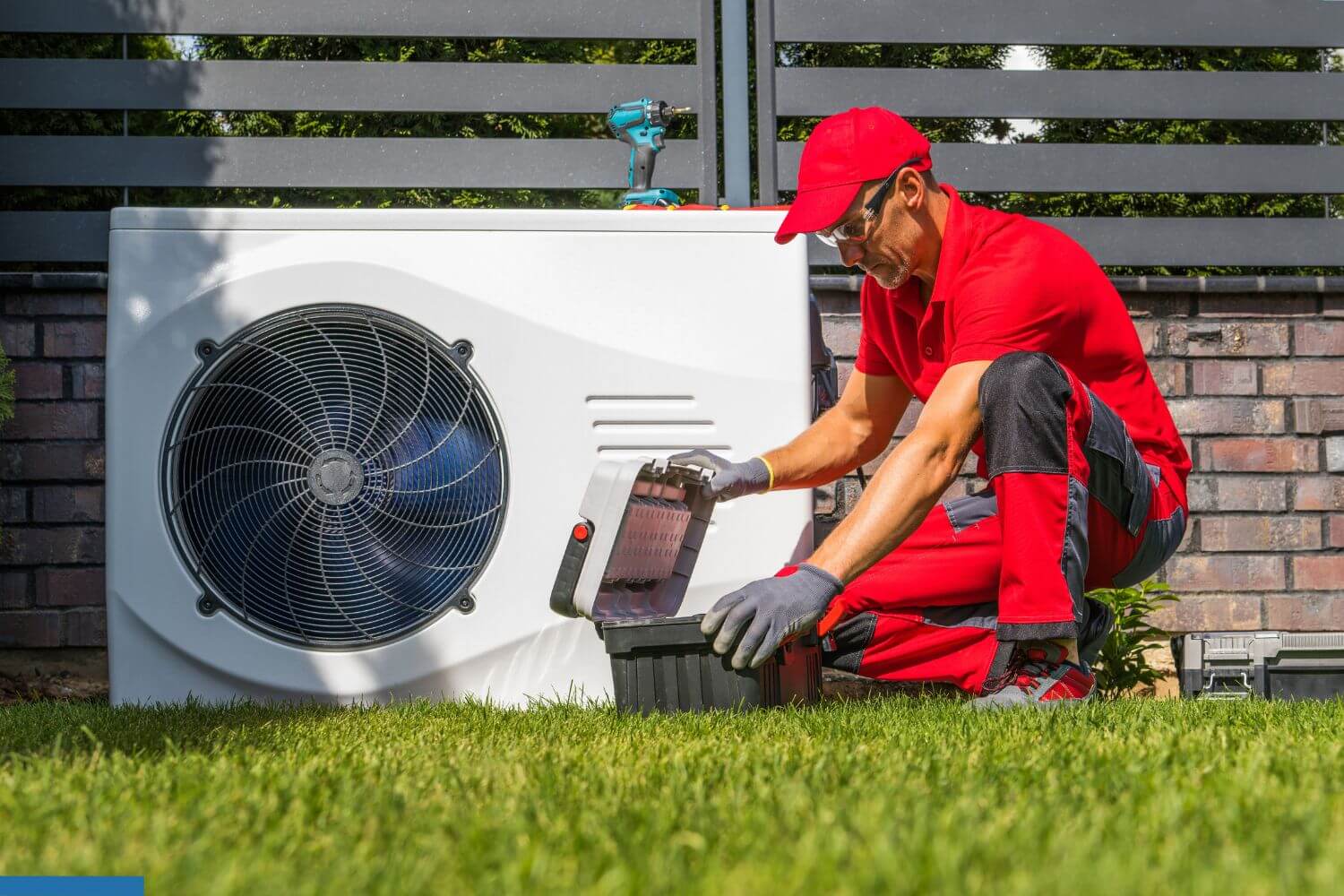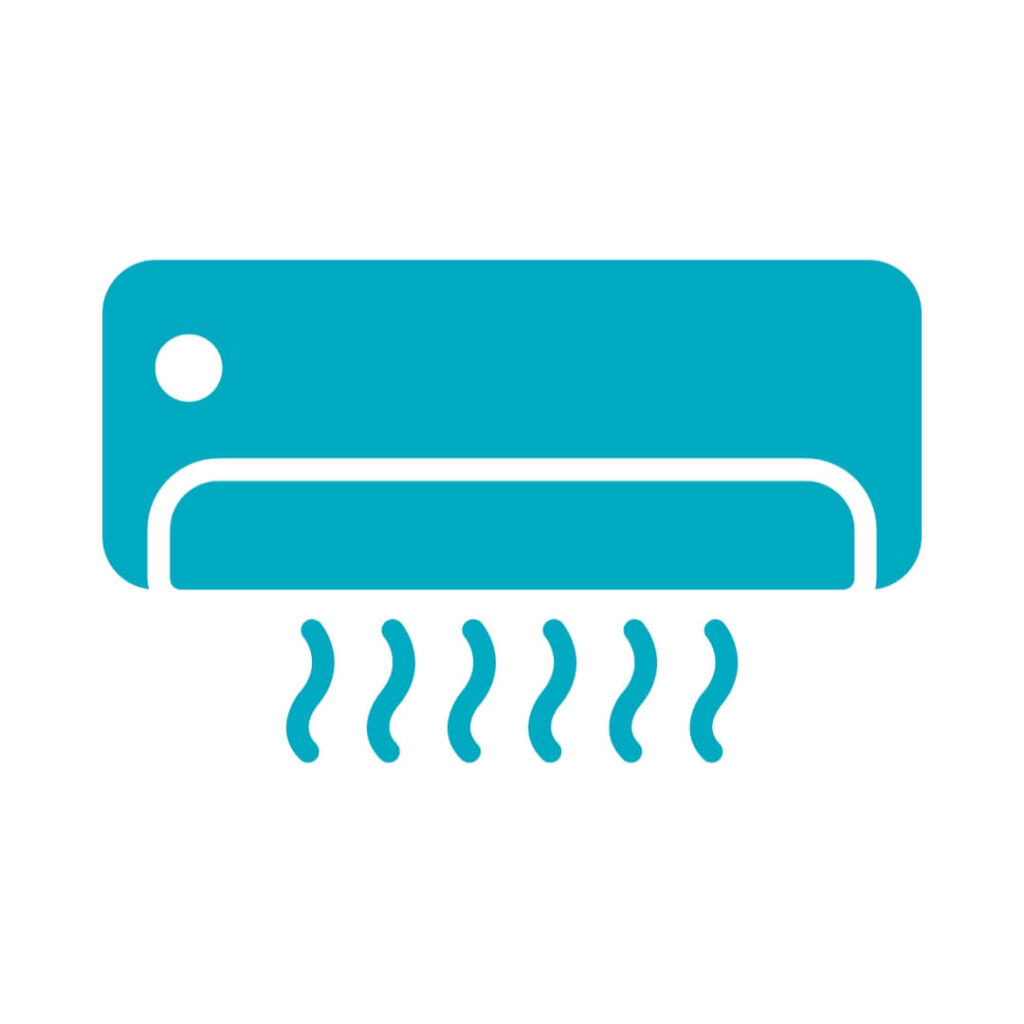
SERVICING: CALGARY & THE CMR
MITSUBISHI ELECTRIC HEAT PUMP & DUCTLESS SYSTEM REPAIR
Are you looking for reliable Mitsubishi Electric heat pump and ductless system repair or installation service in Calgary? You’re in luck! One Stop HVAC offers 24/7 repair services for Mitsubishi Electric products. Contact us today to book your appointment!
Same / Next Day
Service 24/7
Rating 5/5
Google Reviews
Licensed TSSA
Technicians
Served Over 1000
Local Residents
Get Your Free
Estimate Today
Great Prices
Guaranteed
MITSUBISHI ELECTRIC HVAC SERVICES
Please Select One Of The Following:

24/7 Emergency Mitsubishi Electric Heat Pump Repair
Mitsubishi Electric heat pumps integrate heating and cooling features within one single unit, providing comfort throughout the year. Specifically tailored for homes in Canada, these units offer exceptional value. In the event of a malfunction, leaving you without an operational HVAC system, One Stop HVAC is here to assist.
We provide 24/7 emergency repair services dedicated to Mitsubishi Electric heat pumps, and our commitment extends to offering same-day appointments for installations. Count on us as your reliable partner, dedicated to ensuring that your home maintains a consistently functioning Mitsubishi Electric HVAC system.
If your Mitsubishi Electric heat pump won’t turn on, follow these steps:
- Check the power supply and reset the circuit breaker if necessary.
- Confirm thermostat settings and replace batteries if needed.
- Verify the correct mode and fan settings.
- Clean or replace air filters.
- Inspect the outdoor unit for debris and obstructions.
- Check for error codes on the display panel.
- If issues persist, seek professional assistance from One Stop HVAC
If your Mitsubishi Electric heat pump isn’t heating or cooling:
- Check thermostat settings and replace batteries.
- Confirm the correct mode selection (heating or cooling).
- Clean or replace air filters.
- Inspect the outdoor unit for debris or obstructions.
- Consult a professional for issues like low refrigerant, faulty components, or thermostat wiring problems.
- Ensure a stable power supply and check for tripped circuit breakers.
If problems persist, seek assistance from us!
If your Mitsubishi Electric heat pump has ice build-up:
- Turn off the heat pump to prevent further accumulation.
- Check for airflow obstructions and clear any debris around the outdoor unit.
- Inspect and clean or replace air filters.
- Allow the ice to melt naturally or use a hose to gently melt it.
- Consult a professional for refrigerant level checks and replenishment.
- Ensure the defrost cycle is functioning correctly.
- If the issue persists, seek professional assistance from One Stop HVAC, we’d be happy to help you!
If your Mitsubishi Electric heat pump is making strange noises:
- Check for debris or obstructions around the outdoor unit and clear them.
- Tighten any loose components, panels, screws, or bolts.
- For fan issues, especially squealing or grinding, consult a professional technician for inspection and repair.
- Hissing sounds may indicate refrigerant issues, requiring professional diagnosis and resolution.
- Normal sounds during the defrost cycle are generally acceptable.
- If ice build-up is present, follow the steps mentioned earlier.
- Motor issues, like screeching or banging, should be addressed by a professional HVAC technician.
For persistent or unidentified noises, ask us for help!
To identify a faulty compressor in your Mitsubishi Electric heat pump:
No Cooling/Heating:
- Lack of temperature control may indicate a compressor issue.
Unusual Noises:
- Clicking, banging, or irregular sounds may point to compressor problems.
Tripped Circuit Breaker:
- Frequent tripping can suggest a malfunctioning compressor.
Vibrations:
- Excessive shaking or rattling may indicate compressor imbalances.
Temperature Discrepancies:
- Inconsistent heating/cooling performance signals potential compressor trouble.
Visual Inspection:
- Look for damage, oil leaks, or wear on the outdoor unit.
Professional Diagnosis:
- Consult an HVAC technician for accurate diagnostic tests and assessments.
For compressor issues, seek professional assistance from us to avoid further damage and ensure an accurate diagnosis.
Mitsubishi Electric Ductless System Repair & Installation Services
When it comes to ductless heating and cooling systems, Mitsubishi Electric stands out as one of the best. Their highly efficient ductless systems are designed to keep homes and businesses warm even during the harshest winters. One Stop HVAC provides comprehensive repairs and dependable installations of Mitsubishi Electric ductless systems, ensuring our customers can enjoy the comfort that comes with Mitsubishi Electric’s efficient solutions. Plus, with our 24/7 repair and installation services, we strive to make the process convenient for you, offering same-day appointments for your heating and cooling needs.

A ductless Mitsubishi Electric system, also known as a ductless mini-split, provides personalized climate control without the need for ductwork. It comprises indoor units in individual rooms, connected to an outdoor unit by refrigerant lines. Each unit has a remote control for easy temperature adjustments, and the system operates quietly and efficiently. Notable for its zoning capability, the system allows independent control of different zones. Mitsubishi Electric ductless systems are energy-efficient, using inverter-driven compressors for savings. The absence of ductwork provides installation flexibility, making it suitable for various spaces without extensive renovations.
Determining if a ductless Mitsubishi Electric system is right for you involves several considerations. If you prioritize individualized climate control in specific zones or rooms, these systems excel in providing such flexibility. Additionally, if your home lacks existing ductwork or retrofitting is impractical, the ductless system’s installation flexibility becomes advantageous. Mitsubishi Electric ductless systems are known for their energy efficiency, making them a suitable choice for those seeking energy savings and eco-friendly solutions.
Zoned heating and cooling is a system that allows for personalized climate control in different areas or zones within a building or home. Unlike traditional HVAC systems that treat the entire space uniformly, zoned systems divide the property into distinct regions, each equipped with its own thermostat and settings. This customization provides occupants with the ability to set different temperatures for various areas, ensuring individualized comfort. One of the key advantages of zoned systems is their energy efficiency, as they only heat or cool the zones that are currently in use, potentially leading to cost savings. Additionally, the reduced workload on the HVAC system may contribute to less wear and tear, potentially extending the equipment’s lifespan.
The installation of Mitsubishi Electric ductless systems involves a systematic process to ensure effective and efficient performance. To begin, we conduct a thorough site assessment, evaluating factors such as room size, layout, and available space to determine the optimal locations for the indoor and outdoor units. The indoor units are then mounted on walls or ceilings in the designated zones, with a small hole drilled to facilitate the connection of refrigerant lines and electrical wiring between the indoor and outdoor units.
Following this, the outdoor unit, containing the compressor and condenser components, is installed in a strategic location. Refrigerant lines, which facilitate the transfer of heat, are connected between the indoor and outdoor units. Electrical wiring is also configured to establish the necessary connections. This process allows for the creation of a closed-loop system that efficiently manages the heating or cooling of specific zones.
Once the physical installation is complete, we perform a thorough check of the entire system. This includes verifying refrigerant levels, testing electrical connections, and ensuring that the system operates according to the specified settings. A final step may involve providing instructions on the use of remote controls and programming thermostats for individualized climate control in different zones. Overall, the installation process is designed to tailor the ductless system to the specific needs and layout of the space, ensuring optimal comfort and efficiency.
If your Mitsubishi Electric ductless system won’t turn on, check the power supply, thermostat settings, and remote control batteries. Verify there are no timer settings or obstacles interfering with the signal. Inspect air filters for clogs and look for error codes on the display panel, consulting the user manual for interpretation. If the issue persists, it’s advisable to contact One Stop HVAC for a thorough diagnosis and repair, as there may be underlying electrical or component issues.
Mitsubishi Electric System Error Codes
The problem arises when there is a communication issue between the PCBs (Printed Circuit Boards) in the outdoor unit. If the model number is YGMA, YHMA, YJMA, YKMA, or YLMA, the communication issue may occur between the main board and the inverter board or between the main board and the fan board.
The test operation dip switch on the Lossnay circuit board has been set ON.
Inadequate cooling of the compressor can result from insufficient refrigerant levels or a blockage in the refrigerant circuit, elevated ambient temperatures during operation, or airflow issues in either the indoor or outdoor unit (depending on the operational mode). Additionally, compressor overheating may occur due to heightened friction, indicating the onset of compressor seizing, or inaccurate thermistor readings.
There is a possible refrigerant leak. Restriction or blockage in refrigerant circuit causing low side pressure to drop. Problem with the pressure sensor is reading incorrectly.
High-pressure faults are mostly caused by a blocked condenser coil, a faulty fan motor, a restriction of airflow on indoor units in heating mode or a blockage/restriction in the pipework.
Typically brought about by an excess of refrigerant returning to the outdoor unit, leading to overcooling of the compressor. This issue arises when the system is either overcharged, or there are malfunctions in the valves, allowing refrigerant to “flood” back to the compressor.
The water pump is off/faulty. The water flow rate is too slow. The float switch is faulty.
Inspect the indoor drip tray for water accumulation. If there is an excess of water, it suggests a potential problem with the internal pump or drains. Conversely, if the tray is dry or lacks sufficient water to raise the float switch, assess the float switch for continuity. When the switch is lifted, the circuit should be closed, and if the switch is down, the circuit should be open.
The drain sensor is open/short-circuit.
Missing main phase. Check the power supply and noise filter for the correct 3 phase, and check wiring and fuses.
Transmission (M-Net), incorrect wiring. Check wiring, high current, and incorrect voltage on the transmission line and/or M-Net board. Make sure M-net transmission wiring is daisy-chained.
Incorrect power supply, blown fuses or possible faulty PCB. Check mains power is correct, check the fuses, and connections PCB.
Inspect the fan motors for potential connection issues if a faulty connection of a fan is suspected. Examine the leads between the Control board and the Power board for any faults if there’s a faulty connection in the leads. Confirm the correct setting of the model selection switch (SW6) to match the designated model. In environments with high ambient temperatures, check the temperature around the Lossnay unit. Ensure that the fan motors are securely fixed in place for proper installation. Examine the centrifugal fan to ensure it is free of deformities or obstructions. If foreign objects are affecting the centrifugal fan, consider replacing the fan motor. In the case of a malfunctioning fan motor, replacing the circuit board may be necessary. Investigate the connections of the reactor (TB3-4) and check its resistance to address circuit board issues. To pinpoint the specific fan with an issue, refer to the LED flashing sequence and seek assistance from After Sales Technical Support.
Low mains power supply, diode fault. Check mains supply. Check DC bus voltage coming from the diode.
Incorrect mains supply or fan board fault. Check mains power is ok and there is at least 300vdc at the diode stack.
Blockage in the air passage of inverter heatsink, Inverter board failure, inverter fan failure. Check blockages in air duct failure of INV fan or failure of the thermistor.
If a high current is detected for more than 10mins. Check inverter balance. Reduced airflow through the heat sink.
Elevated amperage is being drawn by the compressor, or there may be a problem with the inverter. Conduct an inverter output test to assess the proper functioning of the inverter. Refer to the “Inverter Testing Guide” in the City Multi section of the APP for guidance. If the inverter proves to be functioning correctly, proceed to inspect the compressor windings for any short or open circuits.
Grounding fault of fan motor or fan board fault. Check the voltage on CNVDC on the fan. This should be a high DC voltage around 580vdc. Also check the fan motor windings for an open or short circuit.
Reduced airflow through the heat sink. Fan motor problem. THHS thermistor problem.
Malfunctioning Thermistor – Dead Short/Open Circuit: This issue may be associated with either indoor or outdoor components, so initially, consult the fault code to identify the unit in fault. If a damaged thermistor cable or a poor connection to the PCB is suspected, inspect the connection of the thermistor on the PCB and assess the thermistor wiring. In cases where the PCB is incorrectly reading the thermistor value, unplug the thermistor and test the resistance value to troubleshoot the problem.
The circuit board cannot read the thermistor correctly. Check the connection onto the circuit board, check the resistance of the thermistor, replace the thermistor, replace the circuit board.
Reduced airflow through inverter heatsink. Open/short circuit sensor, disconnected from PCB.
PS1 Pressure fault. Check pressure reading using the dipswitches outdoor. Check the connection of PS3 on PCB.
ACCT or DCCT sensor error. Check inverter error details, check the resistance of the current sensor, and check the connections of sensors.
The indoor unit’s internal float switch connector has detected an open circuit. Check the float switch is operating correctly. If the switch is down then the switch should be open. Also, check for external pumps wired in across the fail-safe connection.
The remote controller is faulty, replace the controller.
Multiple units share the same MNET address, or two or more devices are assigned identical addresses. Examine the address configuration of each device within the MNET network. Additionally, verify the address settings on outdoor units, indoor units, BC boxes, and remote controllers to identify and rectify instances where duplicate addresses are present.
No voltage or short circuit on M-Net transmission line TB7. Check TB7 connections on outdoors and central controllers. Check for voltage on TB7. Check cable size and spec.
Interference in sound transmission. Polarity issue on TB7: Examine the M-Net connection on TB7 and the central controller, checking the cable size and specifications. If the error initially occurred on a specific controller, assess and replace it if necessary. In the event of a faulty Lossnay circuit board, proceed to replace the circuit board.
Power is supplied to the same transmission cable from two or more power supply units, the power supply unit is connected to the TB3 side of the power supply expansion units, or the power supply units are connected to the indoor and outdoor transmission cables.
Poor connection of MNET terminals, MNET cables have been terminated whilst the unit is powered, or malfunction of the unit PCB.
Lossnay has no power, or the lossnay address has been changed. The transmission cable is in excess of 500m or is not securely terminated.
In instances involving multiple Lossnay units, potential issues may arise if the Main/Sub switch is not appropriately set, there is interference on the transmission line, the cable length exceeds 500m, the transmission cable is not securely connected, or a multi-core cable is utilized for various purposes, leading to interference.
MA controller being wired into the M-Net. Wrong cable size/spec. Check where the remote is wired to, check cable length is no bigger than 500 meters, check the connection and type of cable used, and check R/C is not set Sub on field settings.
MA controller being wired into the M-Net. Wrong cable size/spec. Check where the remote is wired to, check cable length is no bigger than 500 meters, check the connection and type of cable used, and check R/C is not set Sub on field settings.
MA controller being wired into the M-Net. Wrong cable size/spec. Check where the remote is wired to, check cable length is no bigger than 500 meters, check the connection and type of cable used, and check R/C is not set Sub on field settings.
MA controller being wired into the M-Net instead of the remote terminals. Wrong cable size/spec. Check where the remote is wired to, check the cable length is no bigger than 500 meters, check the connection and type of cable being used, and check R/C is not set Sub on field settings.
The total indoor unit capacity exceeds the outdoor unit allowable capacity. On a PURY outdoor you are allowed up to 150% of its capacity and on a PUHY/PUMY outdoor you can have up to 130% of its capacity.
SW2 set wrong on indoors, SW5 dips set wrong on YHM-A outdoor, SW3-10 on older kit.
The outdoor unit is not seeing any indoor units or it is seeing more than the allowable value. Check voltage on M-Net, power to the BC box, check dip switches are set correctly on the BC box and the model type of BC box is correct for the system.
GUF unit being used on City Multi system. Make sure SW3-1 setting is on, on the GUF.
Loose or miss wiring of TB3 or TB7. SW5 dip 7 is not set outdoors. The transmission booster was turned off. Check M-Net connections, and dipswitches outdoors.
More than 1 unit in the group is set to as the Main Lossnay (SW5-10 ON), or the group contains two or more units with the same address. The Lossnay that is set to the Main, has not been set to the lowest unit address in the group.
SW5 set wrong on the outdoor or wrong resistors fitted. Check dips, resistors and thermistors.
Check split with MAC 399 wired onto the TB5 line, not the TB7. Check M-Net wiring on systems.
A malfunctioning controller or inadequate wiring connection, along with abnormal voltage reaching the remote controller, may be the cause. Examine the wiring connection from the remote controller to the FTC terminals, ensuring a 12VDC supply to the remote controller. Confirm the illumination of LED2 on the FTC Control board to verify proper functioning.
Incorrect wiring of remote or incorrect dip switch setting if units are grouped. Check unit addressing if grouped or check remote is only wired to the master indoor unit.
Incorrect settings on SW1 switches at the outdoor unit or poor connection or wiring of the remote controller. Check for 12vdc down to the controller and make sure LED 2 is lit on the FTC board, also check the SW1 dips switches on the outdoor unit are set correctly.
Incorrect wiring of the remote controller, insufficient 12VDC supply to the controller, or incorrect settings on the SW1 switches at the outdoor unit could be the issue. Verify the presence of a 12VDC supply to the controller and ensure the illumination of LED 2 on the FTC board. Additionally, examine the SW1 dip switches on the outdoor unit to confirm they are set correctly.
Communication loss or absence between the FTC and outdoor Ecodan may result from an inadequate connection of the interconnecting cable or an incorrect 12-24VDC fluctuating voltage between S2 and S3. To address this, reset the power supply to both the indoor FTC and outdoor Ecodan. Restore power to the indoor unit first, followed by the outdoor unit. Examine the connections and voltages of the interconnecting cable. Additionally, inspect the LEDs on the indoor FTC for any anomalies.
Mis-wiring of indoor to outdoor cable. The system powered up incorrectly. Check for pumps wired in, Check the indoor isolator, and Repower in the correct sequence i.e. indoor then outdoor.
Communication loss or absence between the FTC and the outdoor Ecodan may be attributed to an insufficient connection of the interconnecting cable or an incorrect fluctuating voltage of 12-24VDC between S2 and S3. To address this issue, initiate a power supply reset for both the indoor FTC and outdoor Ecodan. Restart the indoor unit first, followed by the outdoor unit. Inspect the interconnecting cable for secure connections and appropriate voltages. Additionally, assess the LEDs on the indoor FTC for any irregularities.
Communication loss or absence between the FTC and the outdoor Ecodan may result from a suboptimal connection of the interconnecting cable or an incorrect fluctuating voltage of 12-24VDC between S2 and S3. Additionally, if independent power supplies are employed, setting SW8-3 to OFF could contribute to the issue. To troubleshoot, initiate a power supply reset for both the indoor FTC and outdoor Ecodan, starting with the indoor unit followed by the outdoor unit. Examine the interconnecting cable for secure connections and proper voltages, and check the LEDs on the indoor FTC. If the problem persists, power down the entire system and set SW8-3 to ON before powering up the FTC followed by the Ecodan.
Please be aware that these error codes are broad and may not go over every issue. Always consult your Mitsubishi Electric manual or reach out to One Stop HVAC for precise diagnosis and resolution.

